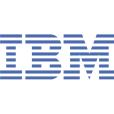 IBM (NYSE: IBM) today disclosed a cross-company project to integrate the Cell Broadband Engine™ (Cell/B.E.) with the IBM mainframe for the purpose of creating a hybrid that is blazingly fast and powerful, with security features designed to handle a new generation of "virtual world" applications, such as the 3D Internet.
IBM (NYSE: IBM) today disclosed a cross-company project to integrate the Cell Broadband Engine™ (Cell/B.E.) with the IBM mainframe for the purpose of creating a hybrid that is blazingly fast and powerful, with security features designed to handle a new generation of "virtual world" applications, such as the 3D Internet.The project capitalizes on the mainframe's ability to accelerate work via "specialty processors," as well as its unique networking architecture, which enables the kind of ultra-fast communication needed to create virtual worlds with large numbers of simultaneous users sharing a single environment.
Drawing on IBM's research, software and hardware expertise, the project is being undertaken in cooperation with with Hoplon Infotainment, a Brazilian online game company whose software is a key component of testing the capabilities of the new environment.
"As online environments increasingly incorporate aspects of virtual reality -- including 3D graphics and lifelike, real-time interaction among many simultaneous users -- companies of all types will need a computing platform that can handle a broad spectrum of demanding performance and security requirements," said Jim Stallings, general manager, IBM System z. "To serve this market, the Cell/B.E. processor is the perfect complement to the mainframe, the only server designed to handle millions of simultaneous users."
At its heart, the project intends to create an environment that can seamlessly run demanding simulations -- such as massive online virtual reality environments; 3D applications for mapping, enterprise resource planning and customer relationship management; 3D virtual stores and meeting rooms; collaboration environments; and new types of data repositories. It plans to achieve this goal by parceling the workload between the mainframe and the Cell/B.E.
Cell/B.E. and Mainframe: A Beautiful Partnership
In the relationship between the mainframe and Cell/B.E. capabilities, Cell/B.E. will handle the complex simulation associated with operating in virtual worlds -- for example, a ball thrown in a virtual reality world must obey the laws of gravity.
To that end, IBM and Hoplon are porting Hoplon software to the Cell/B.E. to handle message passing and physics simulation. The companies have already created a programming model and messaging architecture that separates the application running on the system.
For its part, the mainframe will run Hoplon's industry-specific middleware for virtual worlds, called bitVerse, currently under development using WebSphere XD as the underlying runtime environment, along with DB2.
In addition, the mainframe will run the administrative tasks for middleware and applications. It will also handle logistics (billing, etc.), and connectivity to third parties as well as to multiple clients, which might include PCs, game systems, mobile phones, music players, TVs, and other devices.
The Mainframe: It Contains Multitudes
Unique among servers, the mainframe was designed from the beginning to incorporate processors that handle a variety of specialized tasks. For example, so-called "specialty processors" are designed for processing eligible Linux, Java and data workloads as well as encrypting and decrypting certain data. In addition, the mainframe can include up to 336 RISC processors to assist I/O. It is anticipated that this powerful design point will help the system to integrate seamlessly with the Cell/B.E.
Just as important, the mainframe's Hipersockets technology provides fast communication between all the virtual servers contained in a single machine. As a result, it is believed the mainframe may be the ideal platform for large virtual worlds, which often require a technology platform that can handle many simultaneous transactions spread out among several hundred servers. The mainframe's Hipersockets enable users residing on different virtual servers to interact with each other with minimal lag time. By contrast, in a distributed environment, where many physical servers are connected by networking cables, lag time may be greater.
Other mainframe attributes -- its leadership in security capabilities, for example -- also lend themselves to virtual reality applications. In the security certification known as the Common Criteria's Evaluation Assurance Level (EAL), the IBM mainframe achieved one of the highest levels of certification -- Level 5 -- for logical partitioning, IBM's premier virtualization technology.
And it is able to handle massive workloads. For example, the mainframe recently achieved the world's largest core banking benchmark result delivering a record 9,445 business transactions per second (tps) in real-time based on more than 380 million accounts with three billion transaction histories.(1)
The revolutionary Cell/B.E. -- jointly developed by IBM, Sony Corporation, Sony Computer Entertainment (SCE) and Toshiba -- is a breakthrough design featuring a central processing core based on IBM's industry-leading Power Architecture™ technology and eight synergistic processing elements (SPE). Cell/B.E. "supercharges" compute-intensive applications, offering fast performance for computer entertainment and handhelds, virtual reality, wireless downloads, real-time video chat, interactive TV shows and other "image-hungry" computing environments. The groundbreaking Cell/B.E. processor appears in products such as SCE's PLAYSTATION®3 and Toshiba's Cell/B.E. Reference Set, a development tool for Cell/B.E. applications, as well as the IBM BladeCenter QS20. It is also embedded in custom Cell/B.E. based offerings from IBM Global Engineering Solutions.
Founded in 2000, Hoplon Infotainment is dedicated to multiplayer online games and complex simulations, as well as related online entertainment and business training ventures based on advanced information systems. Hoplon is located in Florianopolis, Brazil, and on the Web at http://www.hoplon.com.
For more information, please visit www.ibm.com.
No comments:
Post a Comment